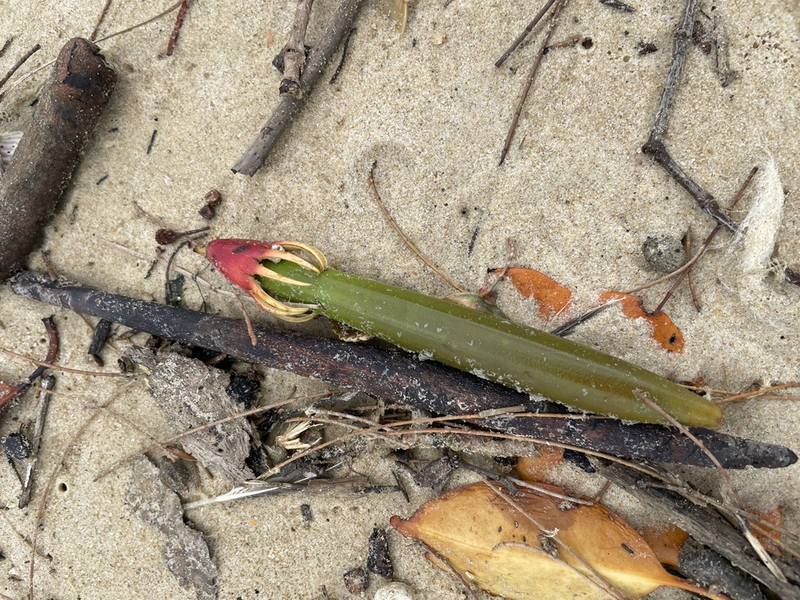Mangroves - the superstars of our coastline
Explore our coastline by learning about the Orange Mangrove Seed.

You may often come across, the humble Orange Mangrove Seed washed ashore along the tideline.
The two parts can either be seen together (as in the image above) or separated.
The red and yellow spiky part is the ‘fruit’, with the elongated green seed (or propagule) below. Both turn brown when dried in the sun.
Around 35 mangrove species (and three hybrids) are known to occur in Queensland.
Mangrove species like to live in brackish salty water (like estuaries, river mouths, and high tide areas). Because of this some salt is taken up by the roots. To remove it, the mangrove accumulates this salt in its leaves, that then grow old and fall from the plant.
Historically, mangroves were portrayed as having little value and being little more than muddy, mosquito infested swamps that need to be cleared. In the past their removal was seen as a sign of progress. Vast tracts of mangroves across the world have been destroyed as they were perceived as useless, or in the way of development, but nothing could be further from the truth.
Why mangroves are superstars in the coastal space.
Mangroves:
- are an essential food source for animals and other organisms
- protect the coastline by absorbing the energy of storm driven waves and wind (natural erosion control)
- stabilise the seabed and shore (‘soft engineering’)
- improve water quality by trapping sediment
- provide habitat (and nursing grounds) for many species
- help to absorb carbon from the atmosphere.
More on the Orange Mangrove
The orange mangrove likes to live in firm, well drained, muddy soils that experience only a few high tides each month (think the upper tidal reaches of rivers, Yandina Creek Wetlands and the Blue Heart).
It is often the most landward of mangrove species.
After flowering, the fruit and propagule appear on the plant between August and February. The seeds are dropped, and float on the current and tide until they are washed ashore where they will hopefully take hold, root, and grow.
If you see these seeds on the beach, please leave them alone as if it's not a suitable location to grow, the next tide will likely float them out and up the coast via ‘longshore drift’.
Love where we live and co-exist with nature in our wildlife friendly biosphere with these tips:
- stay on the designated walkway and out of the dunes and bush
- keep your dogs on a lead and pick up after them
- bin your rubbish to keep our Sunshine Coast clean and litter free.